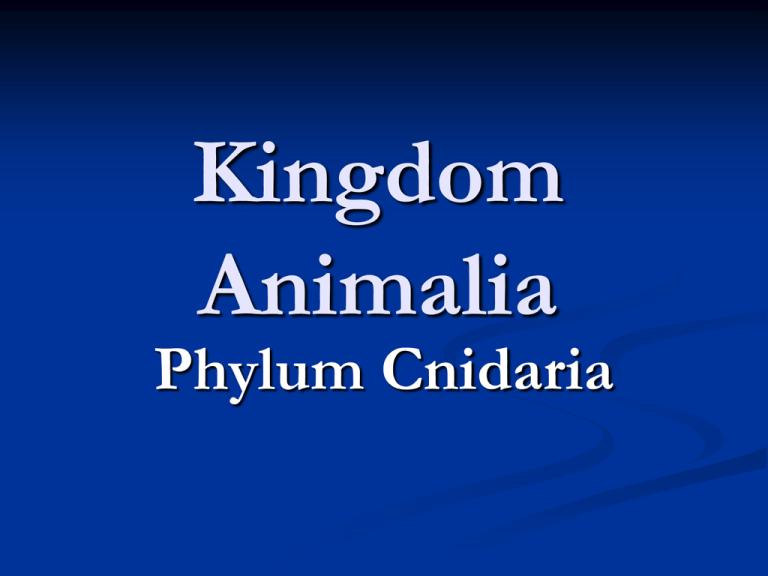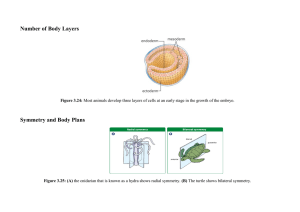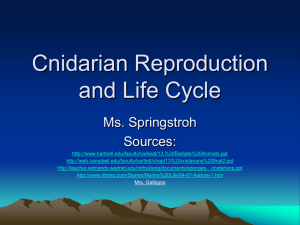Kingdom Animalia Phylum Cnidaria
advertisement

Kingdom Animalia Phylum Cnidaria Characteristics Radial or biradial symmetry Diploblastic organization Mesoglea between epidermis and gastrodermis Gastrovascular cavity Nerve net Cnidocytes – used in defense and feeding Reproduction/Life Cycle Can be monoecious or dioecious Alternate generations between polyp and medusa form Polyp – asexual and sessile Medusa – dioecious and free swimming Reproduction Cont’d Planula – Cnidaria larvae Polyps are produced by budding or planula Medusae formed by budding from a polyp body wall Feeding Use cnidocytes to stun or kill prey Tentacles contract to bring food to mouth Food is digested in gastrovascular cavity Support and Locomotion Hydrostatic Skeleton Some classes have longitudinal muscles that aid in movement Polyps – somersault, inchworm, glide on base, and walk on their tentacles Medusae – swim and float Classification Class Hydrozoa Class Scyphozoa Class Cubozoa Class Anthozoa Class Hydrozoa Mostly marine, but the only class with freshwater members! Alternate generations Mostly colonial polyps Obelia Gastrozooid – feeding polyp formed from planula larvae Grows through budding into more gastrozooids Gonozooid – reproductive polyp that forms medusa by budding Medusae then reproduce sexually Gastrozooid Gonozooid Gonionemus Medusa predominant Has a velum (shelf-like lip that projects inward) Velum creates jet propulsion Mouth at end of a manubrium Nerve ring that coordinates swimming movements Statocyst – responds to gravity Hydra Freshwater Polyps only, no medusae Testes form sperm by meiosis Ovaries form one egg each Physalia Portuguese man-ofwar Colonial Cannot swim Cnidocytes in tentacles are lethal to small vertebrates and dangerous to humans Class Scyphozoa All marine “True Jellyfish” – medusa dominant Stinging Nettle, Mastigias Aurelia Gastrodermal cells have cilia to circulate food Feeds on plankton Rhopalia – chemoreceptors Lappets – touch receptors Statocysts – gravity sensors Ocelli - photoreceptors Class Cubozoa Medusae are cuboidal Polyps are reduced or absent Tentacles hang from corners Class Anthozoa Polyps only, no medusae Mouth has a pharynx Gastrovascular cavity is divided into sections Sexual and asexual reproduction Sea Anemones Corals





